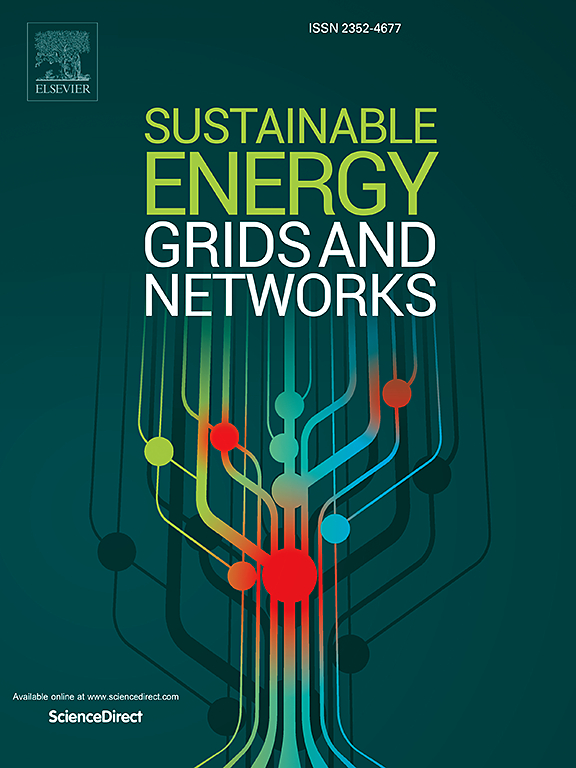Two-layer optimization approach for Electric Vehicle Charging Station with dynamic reconfiguration of charging points
IF 4.8
2区 工程技术
Q2 ENERGY & FUELS
引用次数: 0
Abstract
This paper presents a two-layer optimization of a fast Electric Vehicle (EV) Charging Station powered by the grid, a Photovoltaic (PV) system, and a Battery Energy Storage System (BESS). The paper aims to increase profits by providing an energy schedule of the BESS and the grid, but also dynamically adjusting the power output of every Charging Point (CP). The first layer of optimization gives the daily energy scheduling in thirty-minute intervals considering forecast values of PV production, EV cumulative demand, and electrical price. Meanwhile, the second layer, based on Model Predictive Control, adapts in real time the energy scheduling from the first layer taking into account the actual EV power demand, and the PV power production. Additionally, it dynamically allocates power to each CP depending on the EVs remaining charging time which is estimated using the corresponding EV power curve. The power rate of each CP varies by mechanically changing the internal connection of the Charging Column (CC). We evaluate the proposed methodology by introducing forecast errors regarding the cumulative EV demand and PV power production on sunny and cloudy days. Additionally, we assess the real-time operation with diverse EV arrival times, EV power demand and random EV types. Our findings demonstrate that the optimal dynamic reconfiguration of the CC effectively enables adherence to the daily energy schedule, ensuring increased profit, and EV’s satisfaction without affecting the charging time.
充电点动态重新配置的电动汽车充电站双层优化方法
本文对由电网、光伏(PV)系统和电池储能系统(BESS)供电的电动汽车(EV)快速充电站进行了双层优化。本文旨在通过提供 BESS 和电网的能量计划,同时动态调整每个充电站(CP)的功率输出,从而提高利润。第一层优化考虑了光伏发电量、电动汽车累积需求量和电价的预测值,以 30 分钟为间隔给出了每日能源调度。同时,第二层基于模型预测控制,根据电动汽车的实际电力需求和光伏发电量,实时调整第一层的能源调度。此外,它还会根据电动汽车的剩余充电时间为每个 CP 动态分配电量,而剩余充电时间是通过相应的电动汽车功率曲线估算出来的。每个 CP 的功率率通过机械方式改变充电柱(CC)的内部连接而变化。我们通过引入晴天和阴天的累计电动汽车需求和光伏发电量的预测误差来评估所提出的方法。此外,我们还评估了不同电动汽车到达时间、电动汽车电力需求和随机电动汽车类型下的实时运行情况。我们的研究结果表明,CC 的优化动态重新配置可有效遵守每日能源计划,确保增加利润,并在不影响充电时间的情况下提高电动汽车的满意度。
本文章由计算机程序翻译,如有差异,请以英文原文为准。
求助全文
约1分钟内获得全文
求助全文
来源期刊

Sustainable Energy Grids & Networks
Energy-Energy Engineering and Power Technology
CiteScore
7.90
自引率
13.00%
发文量
206
审稿时长
49 days
期刊介绍:
Sustainable Energy, Grids and Networks (SEGAN)is an international peer-reviewed publication for theoretical and applied research dealing with energy, information grids and power networks, including smart grids from super to micro grid scales. SEGAN welcomes papers describing fundamental advances in mathematical, statistical or computational methods with application to power and energy systems, as well as papers on applications, computation and modeling in the areas of electrical and energy systems with coupled information and communication technologies.
 求助内容:
求助内容: 应助结果提醒方式:
应助结果提醒方式:


